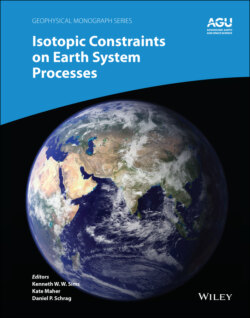Читать книгу Isotopic Constraints on Earth System Processes - Группа авторов - Страница 50
2.2.3. Ca Isotopic Measurements
ОглавлениеAfter microprobe measurements, diffusion couples were sectioned into wafers, about 465 μm thick and weighing about 3 mg, using a Bico diamond wafer saw with blade thickness of 165 μm. The wafers were dissolved in a mixture of hydrofluoric and perchloric acid, dried at 165°C, redissolved in 5 mL 3N HNO3, aliquotted, mixed with a 42Ca‐48Ca double spike to correct for spectrometer‐induced mass discrimination (cf. Watkins, 2010), dried to a small bead, and the bead was redissolved in 100 μL 3N HNO3 for loading onto cation exchange columns. The Ca fraction was separated and collected by cation exchange chromotography using Eichrom Ca‐spec DGA resin. The non‐Ca fraction was saved for subsequent K isotope work. About 3 μg of purified Ca from each sample were loaded onto a zone‐refined Re filament, dried down, topped with 1 μL of 20% of H3PO4 acid and re‐dried.
Ca isotopes were measured by thermal ionization mass spectrometry (TIMS) at UC‐Berkeley on a Thermo‐Finnegan Triton TI with nine moveable Faraday collectors. For each sample, at least 100 isotope ratio measurements were made to reduce within‐run uncertainties to ± 0.04‰. At the time these data were collected in 2009, the long‐term uncertainty in the standard (SRM 715) was conservatively estimated to be ± 0.15‰, and we use this value for the error bars. The Ca isotope ratios of the samples were determined using an iterative spike subtraction algorithm and are reported as (Skulan et al., 1997):
(2.1)
The Ca isotope compositions are provided in Table 2.2.
Figure 2.2 Piston‐cylinder sample assembly used for the diffusion couple experiments. All dimensions are in millimeters.
